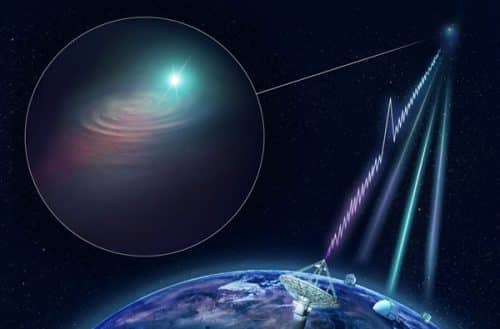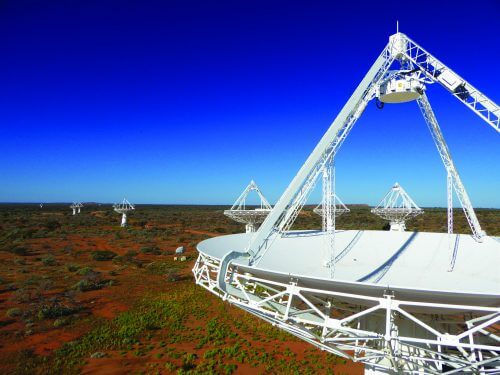The discovery could eventually help astronomers understand what causes fast radio bursts. The current theory holds that it is the activity of magnetars (neutron stars with a strong magnetic field), but it mainly covers small galaxies, so they are trying to understand what caused the explosion in a large galaxy

Researchers have been able to locate for the second time ever the origin of a Fast Radio Burst (FRB), a short-lived explosion that releases in milliseconds the amount of energy that the Sun radiates in nearly a century.
However, the previous eruption whose location was located, FRB 121102, was the type of recurring eruptions, when the same object ignited dozens of times in recent years, but the newly discovered eruption is one of the common one-time eruptions, but due to their one-time nature, it was difficult to discover their origin. In a study published this week in the journal Science, the researchers show that it is possible to track these elusive events and allow astronomers to discover what causes them.
"This is the major breakthrough that the field has been waiting for since astronomers discovered fast radio bursts in 2007," says Keith Bannister, a member of the Center for Scientific and Industrial Research (CSIRO). (CSIRO is Australia's National Science Agency).

Bannister and his colleagues discovered the FRB using ASKAP - a network of 36 radio telescopes spanning a square kilometer in Murchison, Western Australia. The event occurred on September 18, 2018, so the name of the event is FRB 180924. This was very exciting considering that the total number of short radio bursts detected so far was 85 in total, and only two of them would repeat. Now it was possible not only to discover the outbreak but also to track their source.
The researchers developed a new technique that automatically detected FRB 180924 less than 300 milliseconds after the burst reached ASKAP's instruments. This speed is an important figure because the team had to access data that is replaced every 3.1 seconds. The scientists then measured the tiny differences in FRB 180924's arrival time at the individual telescopes that make up the array to within a hundredth of a nanosecond. Comparing these differences allowed them to determine the origin of the explosion in the sky with an accuracy of 0.00002 degrees. This source is on the outskirts of a large galaxy called DES J214425.25-405400.81. Little was known about this galaxy, and the researchers made follow-up observations by the Keck Telescope in Hawaii as well as by the two most powerful ground-based telescopes located in Chile.
The research team determined that the galaxy DES J214425.25-405400.81 is 3.6 billion light-years from Earth. Also, the galaxy is a thousand times more massive and has less active stars compared to the dwarf galaxy where the source of the burst FRB 121102 (which is about 3 billion light years from Earth) is located. The researchers also found that the event that caused the eruption occurred 13 light-years away from the center of the galaxy and therefore ruled out the possibility that the body that erupted was the enormous black hole at the center of the galaxy.
"The most reliable model for outbursts, which offers an explanation for the event, is that the outburst was created by some process involving young magnetars (magnetars are highly magnetic neutron stars)," says Ryan Shannon of Swinburne University, lead author of the paper.
"These magnetars are preferentially formed in tiny dwarf galaxies, such as those of the host FRB 121102," added Shannon. "Either the model for their formation should be flexible and allow eruptions in a variety of galactic environments, or there are two mechanisms for producing eruptions, he concludes.
Another interesting finding is that by observing the eruption, the researchers were also able to identify the composition of the intergalactic material in the segment between the galaxy where the eruption occurred and us.

One response
It is enough to hear a glimpse of the exploits of the Prime Minister's wife and her son to know that there are other forms of life